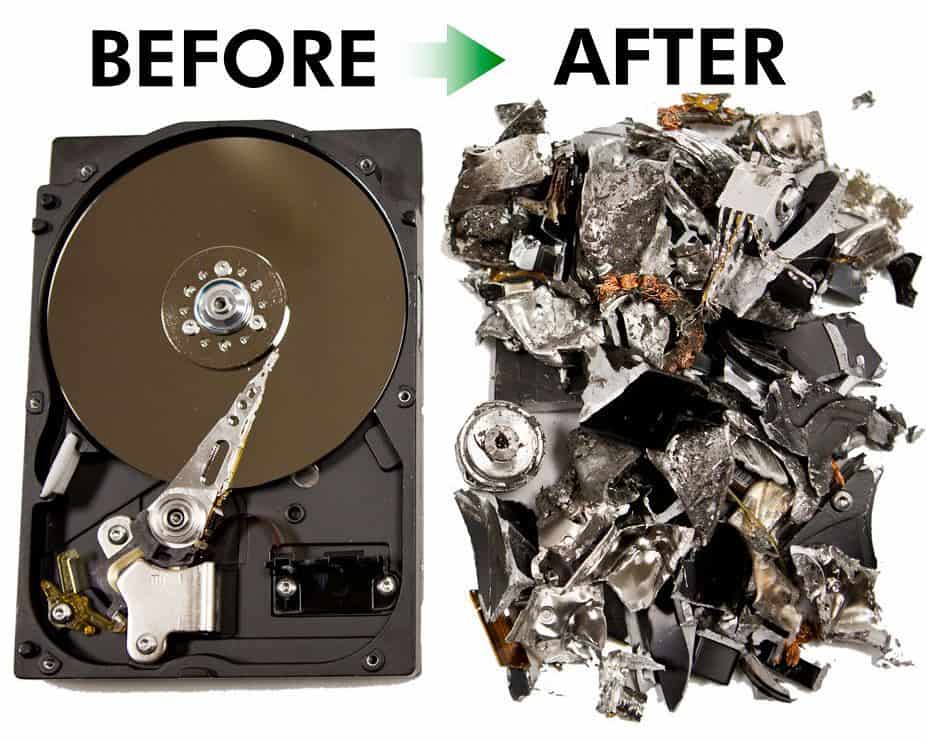The Importance of Effective Data Damage Practices in Shielding Sensitive Info and Ensuring Computer System Safety
In an era where information breaches are increasingly usual, the value of effective information destruction techniques can not be overemphasized. Applying robust information damage techniques not only mitigates these threats but likewise aligns with lawful compliance demands, making sure that companies support their credibility and foster customer depend on.
Understanding Data Damage
Recognizing data damage is essential in today's electronic landscape, where delicate information can quickly be jeopardized. Efficient information destruction includes not simply making certain yet deleting files that information is irretrievable via comprehensive techniques. This procedure is essential for organizations that manage private customer information, intellectual residential or commercial property, or interior files, as any type of violation can cause serious monetary and reputational repercussions.
Data destruction encompasses various strategies, consisting of shredding physical media, degaussing magnetic storage space devices, and employing software-based remedies that overwrite information several times. Each method offers a certain function and should align with the level of sensitivity of the info being dealt with. For example, physical devastation is typically chosen for hard disk drives including very private data, while software approaches may be adequate for much less sensitive information.
Furthermore, sticking to market requirements and policies, such as the General Data Protection Guideline (GDPR) or the Wellness Insurance Mobility and Liability Act (HIPAA), is essential for conformity and to minimize legal dangers. Organizations must establish a durable information destruction plan, train employees on ideal practices, and consistently investigate their treatments to make certain that all sensitive details is gotten rid of firmly and successfully.
Threats of Inadequate Practices
Poor data damage methods subject organizations to considerable threats that can have far-ranging consequences. When sensitive information is not appropriately disposed of, it continues to be susceptible to unauthorized gain access to, which can cause information violations and identification theft. Such incidents not only jeopardize the protection of people however additionally stain the organization's credibility, leading to a loss of consumer trust fund and potential financial repercussions.
Furthermore, regulative conformity is progressively rigorous in several sectors. Failing to abide by information destruction policies can cause large penalties and lawful activities versus organizations. These fines can strain economic sources and divert focus from core organization operations.
In addition, the abuse of recurring data can bring about copyright theft or corporate reconnaissance, endangering competitive benefits (data destruction). The influence of insufficient data devastation expands past prompt monetary losses; it can also cause long-lasting damage to brand name integrity and market placement

Organizations need to recognize that information protection is not exclusively about protecting against breaches; it additionally includes the liable administration of data throughout its lifecycle. Overlooking reliable data damage methods can have disastrous effects, emphasizing the requirement for robust steps to reduce these risks.
Finest Practices for Information Devastation
Applying effective data destruction techniques is crucial for guarding delicate info and maintaining compliance you can try here with regulatory criteria. Organizations ought to embrace a multi-faceted method to guarantee that information is irretrievable, thereby stopping unauthorized gain access to and prospective violations.
First, information need to be classified based upon level of sensitivity, permitting organizations to apply suitable damage techniques customized to the degree of threat. For digital information, using software-based data-wiping devices that abide with sector criteria can effectively overwrite existing data. Physical destruction techniques, such as shredding or degaussing, are vital for tools that save delicate details, ensuring complete eradication.
Establishing a clear data retention policy is important, detailing how much time different kinds of information should be retained prior to devastation. Normal audits of information storage space systems are likewise required to identify outdated or unnecessary information needing elimination.
In addition, training staff members on the value of data devastation and the certain procedures to follow fosters a culture of safety and security within the company. Lastly, maintaining documents of data destruction refines gives responsibility and supports conformity with internal plans and outside laws. By adhering to these ideal methods, companies can considerably minimize the risks connected with data exposure.
Legal and Conformity Factors To Consider

Failing to follow these guidelines can lead to serious fines, consisting of significant fines and reputational damage. Organizations should implement a robust information damage plan that lines up with these lawful frameworks and provides clear guidelines on the proper approaches of information disposal, whether physical shredding or electronic wiping.
In addition, keeping documents of information damage activities is necessary for showing compliance during audits or inspections. By prioritizing legal and conformity factors to consider, companies can improve their data security position and foster trust with clients and stakeholders, eventually adding to a more secure information administration atmosphere.
Benefits of Effective Information Damage
Effective data damage methods expand past simple conformity; they offer significant benefits to organizations that prioritize them. By making sure that sensitive info is irretrievably destroyed, companies reduce the threat of data violations and the potential economic effects connected with them. This proactive technique not only safeguards versus unapproved gain access to but additionally enhances the general credibility of the company in the eyes of clients and stakeholders.
Executing robust information damage approaches, such as physical destruction of storage tools or advanced data cleaning techniques, adds to the fortifying of a company's cybersecurity position. data destruction. It minimizes the likelihood of copyright burglary and protects proprietary info, therefore maintaining a competitive side on the market

Conclusion
In conclusion, reliable information devastation techniques are important for protecting sensitive info and improving general computer safety and security. Ultimately, a commitment to robust information devastation methods promotes a culture of responsibility, thereby strengthening a company's cybersecurity stance and keeping client count on.

Comments on “Essential Cyber Security Practices for Effective Data Destruction Strategies”